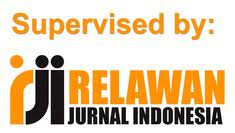Produktivitas Perbankan Indonesia Dengan Pendekatan Malmquist Index Productivity
DOI:
https://doi.org/10.51977/jsm.v2i1.186Keywords:
Perbankan, Produktivitas, Malmquist Index ProductivityAbstract
Abstrak
Penelitian ini dilakukan untuk melihat bagaimana tingkat produktivitas perbankan di Indonesia dengan menggunakan Malmquist Productivity Index (MPI) yang merupakan suatu pendekatan non parametrik dengan menggunakan indeks bilateral. Penelitian ini dilakukan pada 84 bank di Indonesia selama tahun 2005 hingga 2016. Penelitian ini dilakukan dengan menggunakan dua model untuk variabel output yaitu model pertama total pinjaman, investasi sekuritas, dan pendapatan lainnya, sementara itu model kedua menggunakan pinjaman lainnya, investasi sekuritas dan pendapatan lainnya. Untuk variabel input dilihat dengan dengan menggunakan beban administrasi dan umum, aset tetap, total simpanan. Hasil penelitian menunjukkan bahwa diantara kedua model ouput yang digunakan, model pertama cenderung lebih baik, meskipun hasil pengujian menunjukkan kurang optimalnya tingkat penggunaan teknologi. Hasil pada model pertama juga menunjukan nilai rata-rata produktivitas yang lebih tinggi.
Keyword: Perbankan, Produktivitas, Malmquist Index Productivity
Abstract
This study was conducted to see how the level of banking productivity in Indonesia using the Malmquist Productivity Index (MPI), which is a non-parametric approach using a bilateral index. This research was conducted at 84 banks in Indonesia from 2005 to 2016. This research was conducted using two models for output variables, the first model is total loans, investment securities, and other income, while the second model used other loans, investment securities and other income. For input variables seen by using administrative and general expenses, fixed assets, total deposits. The results showed that between the two output models used, the first model tended to be better, although the test results showed less optimal use of technology. The results in the first model also show higher average productivity values.
Keyword: Perbankan, Produktivity, Malmquist Index Productivity
References
Hadad, Muliaman D., Hall, Maximilian J.B., Kenjegalieva, Karligash A., Santoso, Wimboh., Simper, Richard. 2011. Productivity Chnages and Risk Management in Indonesian Banking: a Malmquist Analysis. Journal Applied Financial Economics. Vol. 21, issue 12.
Isik, I. & Kabir Hassan, M., 2003. Financial deregulation and total factor productivity change: An empirical study of Turkish commercial banks. Journal of Banking and Finance, 27(8), pp.1455–1485.
Kalluci, Irini. 2018. Albanian Banking Sector Productivity Using Malmquist Index. Research Journal of Finance and Accounting. Vol 9, No. 12.
Lema, Tadesse Zenebe. 2017. Productivity Change of Ethiopian Banks: a Malmquist Productivity Index Approach. Munich Personal RePEc Archive. No. 77969.
Munteanu, A., Brezeanu. P., Badea, L. 2013. Productivity Change Patterns in Romania Banking System: the Impact of Size and Ownership on Total Factor Productivity. Theoretical and Applied Economics. Vol. XX. No. 6(583), pp. 35-52.
Neupane, B. 2013. Efficiency and Productivity of Commercial Banks in Nepal: aMalmquist Index Approach. Asian Journal of Finance & Accouning. 5(2), 220-243.
Publisher, Boston USAFare. 1994. Estimation of Returns to Scale Using Data Envelopment Analysis. European Journal of Operational Research, 7(93), 79-82.
Rani, Lina Nugraha, Rusydiana, A.S., dan Widiastuti, Tika (2017). Comparative analysis of Islamic banks productivity and conventional banks in Indonesia period 2008-2016, Proceedings on International Conference on Islamic Economics, Business and Philanthropy, Bandung November 2017.
Raphael, G. 2013. A DEA Based Malmquist Productivity Index Approach in Assessing Performance of Commercial Banks: Evidence from Tanzania. European Journal of Business and Management, Vol. 5, No. 6, pp. 25-34.
Sellers-rubio, R. & Mas-ruiz, F., 2006. An Empirical Analysis of Productivity Growth in Retail Services?: Evidence From Spain.
Sufian, Fadzlan. 2007. Malmquist Indices of Productivity Change in Malaysian Islamic Banking Industry: Foreign Versus Domestic Banks. Journal of Economic Cooperation, 28,1 (2007), 115-150.
Suzuki, Yasushi., Sastrosuwito, Suminto. 2011. Efficiency and Productivity Change of the Indonesian Commercial Banks. International Conference on Economics, Trade and Development IPEDR, vol.7.
Vinh, N. T. H. 2012. Evaluating the Efficiency and Productivity of Vietnamese Commercial Banks: a Data Envelopment Analysis and Malmquist Index. VNU Journal of Science, Economics and Business 28, No. 2, 103-114.









